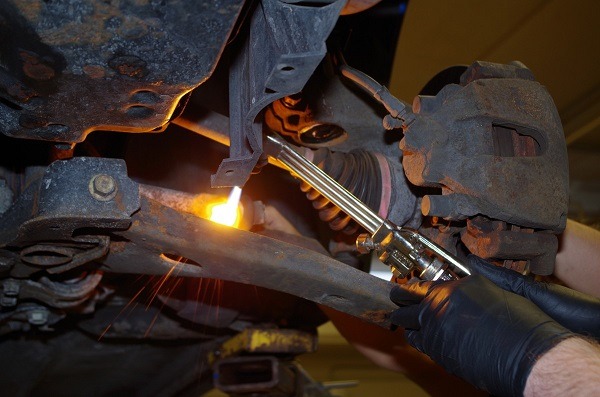Whether you’re dabbling in or have a professional relationship with auto body repair, it’s vital to learn the technical tasks surrounding the activity and the needs of your vehicle. Self-starter or not, you have to be aware of the delicacy surrounding this job—a job that demands the right welders for auto-body work.
Speaking of welders for automobile work, the list is actually very limited. Among them is a trio of welding categories that focus on vehicle maintenance and repair. So, what then are these welding options? Let’s take a closer look so that you can decide for yourself which is most suited to your needs.
The Best Welders for Auto Body Work
The following auto body welders have pros and cons independent of each other. Still, they address safety precautions for automobile work in much the same way. They also don’t hold any drastic differences in terms of results, so choosing one will mostly be dependent on your individual needs and preferences.
1. MIG Welder
Known more for its long-term usefulness than anything else, MIG welding has been a popular option for years now. It stands for Metal Inert Gas and is among the most effective welding types for addressing auto bodywork. It works exceptionally well on chassis-related repair and maintenance and holds considerable potential for welding steel and aluminum.
You might struggle through your first time using a MIG welder. However, once you get the hang of it, you will quickly realize it is quite easy to use. It is also economical and produces less distortion than other machines. Then, there’s the fact that cleaning it is a cinch, so there’s no need to worry too much about post-welding maintenance.
Professionals are partial to this welder option due to its ability to weld metals across the board, regardless of their thin or thick surfaces. These machines hold so much of their power in their spools, which are fed based on the pre-selected speed setting. This is arguably a MIG welder’s best feature, as it allows accurate fusion and burning of both base and parent metal.
Success in MIG welding depends a lot on the welding gun and inert gas, so make sure both these parts are in tip-top shape. With a 120V power source, you can easily use a MIG welder in a shop. You will need the right accessories to pair it with, which could include a shielded gas, welding wire, regulator, and gas hose.
2. TIG Welder
In the Tungsten Inert Gas welding option, you get a non-consumable electrode of Tungsten as a welding performance boost. It’s among the most common and effective processes for welding auto body parts. This is in part thanks to its capability to prevent atmospheric contamination. It usually makes use of argon as its shielding gas and a filler metal to execute its particular brand of welding.
TIG welding involves feeding long welding rods into weld puddles. As a result, it becomes more appropriate for thin-metal welding. The ease with which TIG welders weld aluminum and steel are mostly due to its shielding gas, argon.
Classified as an electric welding machine, the TIG welder allows electricity to pass through its tungsten electrodes to create heat. This then leads to a metal arc formation where the filler metal is dipped and melted.
More often than not, a TIG welder delivers a top-notch weld. It rarely produces any flux or spatter, making its aesthetic game among the best in the industry.
3. Metal Arc Welder
As one of the pioneering welding options in the industry, you can never count the metal arc welder out. Its prowess in auto body shop procedures extends until the present due to the timeless way it addresses such issues. While not quite in the league of MIG welding, it does hold its own for welding joints and alloys both indoors and outdoors.
Economically speaking, you can’t do any better than the metal arc welder. It also works silently, which is more than what you can say for the other machines. The flux-coated electrode is consumable and contains cast iron, stainless steel, mild steel, and various other alloys. This material is chosen based on the fundamental qualities of the base material in need of welding.
As one of the simplest welders in the game, you only need to secure a work clamp, power supply, and electrode holder to get a metal arc welder going. It works optimally for metals with at least an 18-gauge thinness or metals with a 1/16 thickness or greater.
So, Which Welder Should You Choose?
The bottom line is to choose one based on your specific automobile needs and circumstance. Looking at these welders’ unique characteristics and accessories should be enough to guide you towards a wise decision. Also, you mustn’t forget to implement safety precautions throughout the welding process, as that matters more than anything else.

